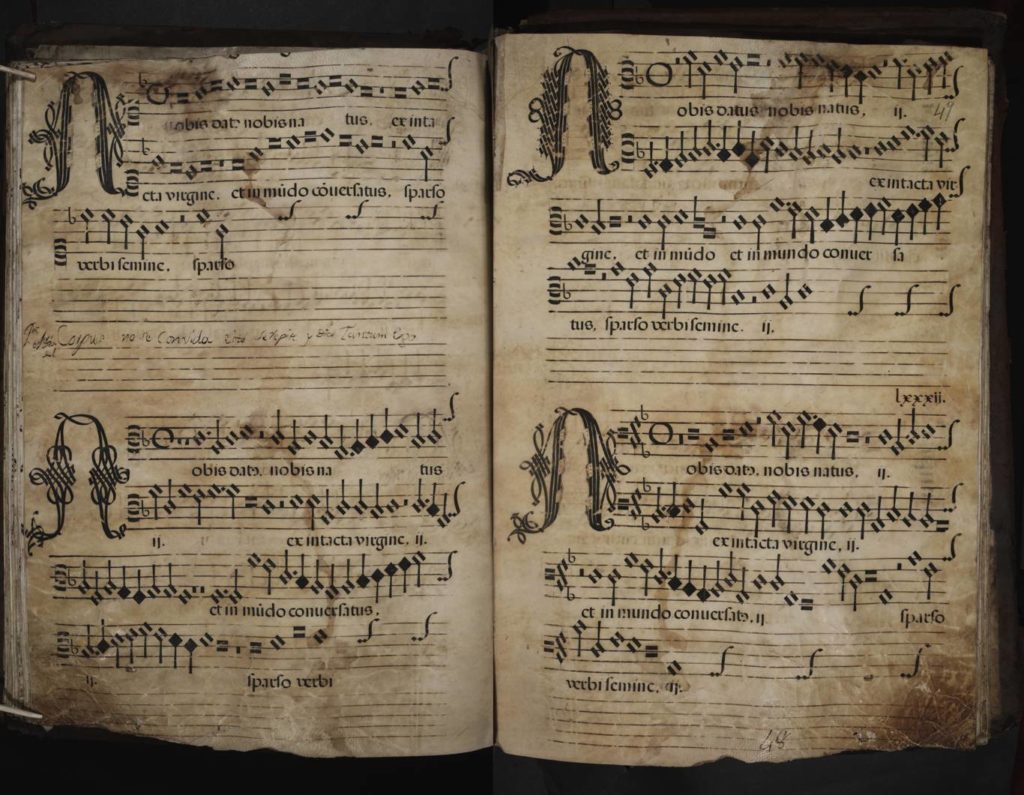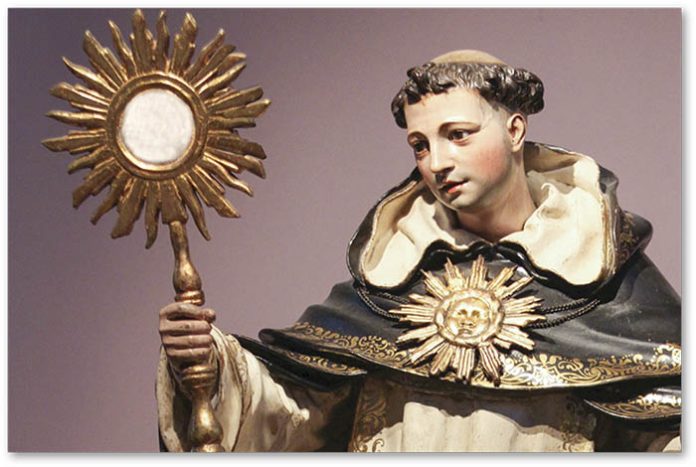Every 28 January, the Church celebrates the Feast of Saint Thomas Aquinas (1255-1274), Doctor of the Church and patron saint of students. Last Thursday, the Theology faculty at San Isodoro de Sevilla hosted Saint Thomas Aquinas Academic Day, presided over by Seville’s Archbishop, Monsignor José Ángel Sainz Meneses. During his remarks, he said this about the Saint: “He was a man committed to the investigation of the truth (…) and he understood that truth has its origin in God, source of all truth.”
This Italian Saint is linked to Seville Cathedral in a special way. A known philosopher and theologian, he was the author of “Pange Lingua” a eucharistic hymn written by order of the Roman Pontiff for the office of Corpus in praise of the Most Holy Sacrament.
In the present day, “Pange Lingua” is sung in the Seises, at the Carnaval Triduum, at the Octave of Corpus and the Octave of the Blessed Virgin, always while the Blessed Sacrament is being presented and when the children finish dancing. At that moment, before the solemn blessing with the Blessed Sacrament, the final part of the hymn is sung, called “Tantum Ergo”
This 13th century canticle specifically expresses the doctrine of Transubstantiation (conversion), in which, in accordance with Catholic belief, the bread and wine become the Body and Blood of Christ, and its singing was compulsory until the Liturgical Renewal.
The performance of this hymn evolved in Seville Cathedral, thanks to composer Francisco Guerrero, who created a “polychoral adaptation” especially for the Cathedral.
Directly connected to this particular interpretation is the original copy of the hymn “Pange lingua” which is conserved in the Cathedral’s musical archive, written over twenty rolls of parchment – fifteen for voices and five for the accompaniments.
Various references in the ceremonial books give an account of the innumerable occasions on which this hymn was performed over the course of the Feast of Corpus Christi and its Octave in the Cathedral. The ceremony modernized the new discourse on Baroque celebratory language, in which music served as one of the most important sensory elements, astonishing the people who came en masse to the Cathedral on those occasions.
Adaptation of the hymn “Pange Lingua” by Saint Thomas Aquinas [Francisco Guerrero] Archive of Seville Cathedral. Subfund chapel of music, Libro de polifonía nº 2 [E-Sc 2], fols. 48v-49r

